Mark Mayer, author of “Aerialists,” recommends novels with hidden realities
Rabbit holes, magic wardrobes, subtle knives — my favorite moments in my favorite books were always when we got to step out from one world into another one, the hidden world that had been here adjoining ours all along. Whatever wackiness or magic waited inside Oz or the Chocolate Factory, it would be hard to find anything more wonderful than that threshold between worlds. The sensation of the mothballs transforming into snow as they crunch underfoot at the back of the wardrobe — that was what I wanted when I wanted a story.
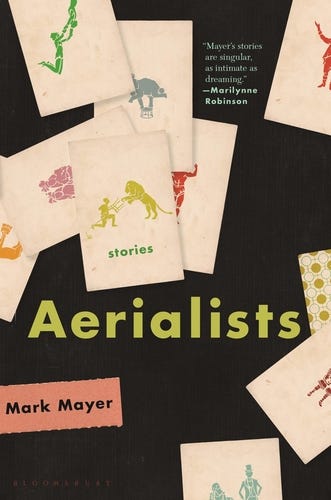
A world within the world is what all fiction offers, and in such looking-glass moments, we catch a reflection of ourselves, readers, with our heads in one world and our chairs in another. In Julio Cortázar’s tiny, perfect thriller “Continuity of Parks,” it’s the reader’s green armchair that becomes a dangerous portal, the real place toward which an imaginary killer comes tiptoeing, knife in hand. In the One Thousand and One Nights, the happy vertigo of stories within stories within stories quakes the ground of each new world we enter: we’re never certain when a new rabbit hole will open beneath our feet — an effect W. G. Sebald, Jesse Ball, and Rachel Cusk all exploit in novels that, in their own brilliant ways, thread hidden passages among stories and worlds. Even when we put down books like theirs with stories within stories and worlds within worlds, we can’t shake the feeling that there must be new worlds hidden everywhere. “Behind every word a whole world is hidden that must be imagined,” Heinrich Böll says. Seems true to me: every person, place, thing, and word — a chamber of secreted histories.
When I was working on the stories in Aerialists, I started thinking of them as realisms with holes in them. No matter the premise I started from, each story soon enough revealed another reality that peered into it. One character imagined finding a pattern in the kitchen linoleum that would unlock a world he calls The There. Another character created a virtual replica of his lost neighborhood world. Another imagined a portal into her disabled friend’s mind. I’m not sure why my stories kept opening into such alternate worlds — maybe a reality, in order to feel real, requires some vantage outside of itself, just as waking consciousness requires dreams. The list here assembles some of my favorite literary works of worlds within worlds, some of the post-YA portals I’ve loved.
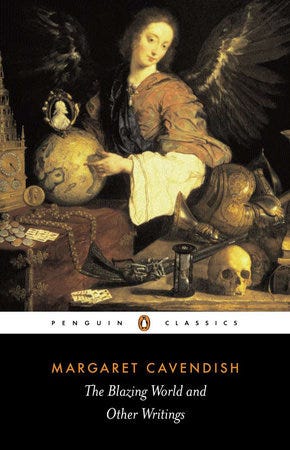
The Blazing World by Margaret Cavendish
In 1666, Margaret Cavendish, the Duchess of Newcastle, published The Description of a New World, Called The Blazing-World, a bizarre and delightful work of feminist science fiction and utopian experiment. A young woman kidnapped by a seafaring merchant is shipwrecked at the North Pole. Merchant and crew freeze to death but the young lady, kept alive by “the light of her Beauty, the heat of her Youth,” slips through into another world, ablaze with vibrant stars, that is conjoined to hers pole to pole. There she’s greeted by Bear-men, Fox-men, and Geese-men and made the empress of this new world. As empress, she’s mostly concerned with questions of natural philosophy, which she debates with the Magpie-men and Jackdaw-men, but she also organizes an invasion of her home world, deploying “Fire-stone” to burn down her countrymen’s wooden ships. To be read alongside Daniel Dutton’s brilliant novel about Margaret Cavendish, Margaret the First.
With Margaret the First, Danielle Dutton Offers Readers a Fascinating and Unique Portrait
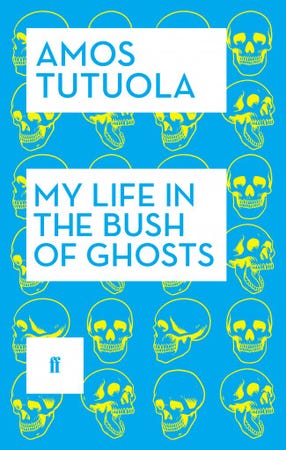
My Life in the Bush of Ghosts by Amos Tutuola
My Life in the Bush of Ghosts is a marvelously surreal and linguistically brilliant novel by Yoruban Nigerian author Amos Tutuola. The narrator, a seven-year-old boy fleeing a slave war, runs into the bush not knowing that this bush is the Bush of Ghosts, “banned to be entered by any earthly person.” He lives there among the ghosts, moving from ghost village to ghost village, befriending burglar-ghosts, having ghost weddings. My favorite ghost is the “flash-eyed mother” of “fearful, dreadful, terrible, curious, wonderful and dirty appearance.” Large as a “vast round hill,” with a mouth that can “swallow an elephant uncut” and eyes that are always “bringing out splashes of fire,” she rules the 13th ghost town where baby-sized ghosts feed her bush animals all day. The bush world is a chaotic mix of Christian and Yoruban imagination, violent, comic, and vibrant.

Tropisms by Nathalie Sarraute
The most bewildering world within the world, strangely and obviously, is one’s own black-box interior. Before it gets refined into conscious thought and emotion, inner life is a weird world of unnamable churning sensations. One of the strangest and subtlest attempts to represent the alien inner world is Nathalie Sarraute’s first book, Tropisms, a beautiful series of spare prose experiments in which she attempts to show the “movements” of our inner weather, movements “hidden under the commonplace, harmless appearance of every instant of our lives.” “These movements,” she explains in a foreword, “slip through us on the frontiers of consciousness in the form of undefinable, extremely rapid sensations. They hide behind our gestures, beneath the words we speak, the feelings we manifest, are aware of experiencing, and able to define. They seemed, and still seem to me to constitute the secret source of our existence, in what might be called its nascent state.” As if this weren’t strange enough, Sarraute then relates these “movements” via scenes of people calling upstairs at dinnertime or window shopping or passing their shabby neighbors on the stairs, using such everyday scenes to evoke the inner world. Sarraute went on to write novels and a bestselling childhood memoir, but she claimed these inner movements were what united all her work.
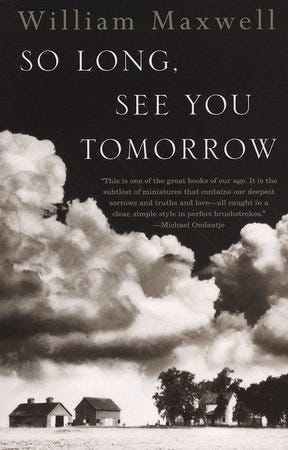
So Long, See You Tomorrow by William Maxwell
So Long, See You Tomorrow is a perfect “realism with a hole in it.” The realism is an autofiction about a boy in 1920s Illinois mourning his mother and snubbing a friend whose father has committed suicide (and murder). But in his mourning and regret, the narrator seeks some passage back to the world and life he’d known when his mother was still alive. “The idea that kept recurring to me…was that I had inadvertently walked through a door that I shouldn’t have gone through and couldn’t get back to the place I hadn’t meant to leave.” His reality is a bad Narnia he’s stuck in.
Maxwell’s novel is full of invisible doorways of this kind, between tangent worlds. When the narrator’s father remarries and buys a new house still under construction, the narrator visits the new house after school and plays on the framing, balancing on the beams and passing between the wall studs, performing something metaphysical or counterfactual as he crosses through his future walls: “I had the agreeable feeling, as I went from one room to the next by walking through the wall instead of a doorway, or looked up and saw blue sky through the rafters, that I had found a way to get around the way things were.” As an adult, the narrator connects that magic scaffolding with Giacometti’s delicate sculpture the Palace at 4 A.M., a spare half-built architecture where, he imagines, “What is done can be undone.”
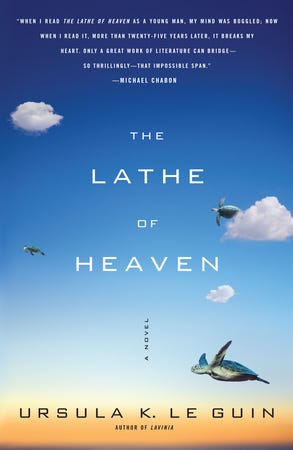
The Lathe of Heaven by Ursula K. Le Guin
Le Guin’s hero George Orr has a strange condition: what he dreams becomes reality. If he dreams of peace or drought or alien invasion, the world will have it. Le Guin’s novel tracks his increasingly disastrous sessions with a hypnotherapist who wants to use Orr to cure the world’s ails and raise his own star. People say the novel is a pessimistic meditation on the utopian imagination, but there’s such liveliness in how the novel, chapter by chapter, reassembles its world from new dream materials, it seems like a celebration of imagination, even when the aliens invade. There’s also a beautiful romantic plotline, the lovers finding each other in spite of their deleting worlds, that must have been an inspiration for Eternal Sunshine of the Spotless Mind. Here “reality” is the world within, the fragile thing encased in capricious human imagination and ambition.
Ursula K. Le Guin Explains How to Build a New Kind of Utopia
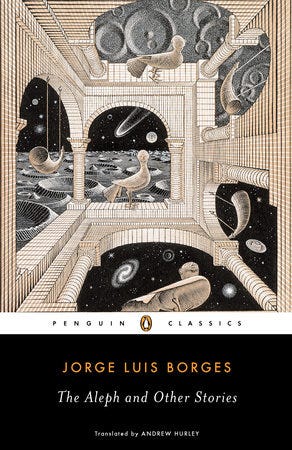
The Aleph and Other Stories by Jorge Luis Borges
An Aleph, in the world of Borges’s masterful, bitter short story of that name, “is one of the points in space that contain all points.” So here, the world within the world is the world itself, which reveals itself, every detail, from every angle, to anyone who looks into an Aleph. A literary rival of the narrator happens to have an Aleph in his cellar in Buenos Aires. When the narrator finally peeks in the Aleph, “a small iridescent sphere of almost unbearable brightness,” he’s dizzied by the sight of a whole contained in one of its parts. “I saw…a sunset in Querétaro that seemed to reflect the color of a rose in Bengal, saw my bedroom (with no one in it), saw in a study in Alkmaar a globe of the terraqueous world placed between two mirrors that multiplied it endlessly…saw the Aleph from everywhere at once, saw the earth in the Aleph, and the Aleph once more in the earth and the earth in the Aleph….” If literature’s aim is to show the universal in the particular, it would be hard to do better than this — the whole world in a bright marble — which may be why “The Aleph” is a story of literary competition as much as magic artifacts. “Aleph,” Borges reminds us in a Borgesian note at the end of the story, is the first letter of the Hebrew alphabet — ℵ — said in the Kabbalah to have the shape of “a man pointing to the sky and the earth, to indicate that the lower world is the map and mirror of the higher.”
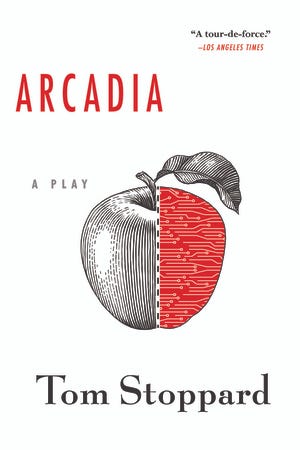
Arcadia by Tom Stoppard
Arcadia is a bewilderingly smart play about, well, entropy and English gardens and academic rivalry and “carnal embrace,” which, as one of the principals explains, is “the practice of throwing one’s arms around a side of beef.” I’ve never seen it staged, but it’s as readable as a novel — a delicious, bawdy, nerdy mystery thriller. The play’s scenes all take place at Sidley Park, an English country estate, but they alternate between the early 19th century and the present. While they conduct their love affairs and tutoring lessons, the Romantic era characters — Lord Byron somewhere off stage among them — speculate about entropy, the world’s inevitable progression into disorder. Meanwhile (whatever that means across centuries), present-day academics vie to reassemble what happened in 1812 at Sidley Park. Though staged as worlds beside worlds, with the two eras alternating scene by scene, Arcadia is fascinated with what time conceals and destroys for good, fascinated with how — and whether — the past is contained in the present. In the final scene, both sets of characters join on stage together, oblivious to each other, yet waltzing the same magical, dizzying waltz together.

About the Author
Mark Mayer’s stories have appeared in American Short Fiction, Kenyon Review, Guernica, Colorado Review, and Mid-American Review. His debut novel, Aerialists, is out now from Bloomsbury. Mayer has an MFA from the Iowa Writers’ Workshop, where he was a Michener-Copernicus Fellow. He spent two years at Cornell College’s Center for the Literary Arts as the Robert P. Dana Emerging Writer-in-Residence. He lives in Denver. Follow him at www.markgmayer.com and on Twitter.


7 Books About Worlds Within Worlds was originally published in Electric Literature on Medium, where people are continuing the conversation by highlighting and responding to this story.
Source : 7 Books About Worlds Within Worlds







